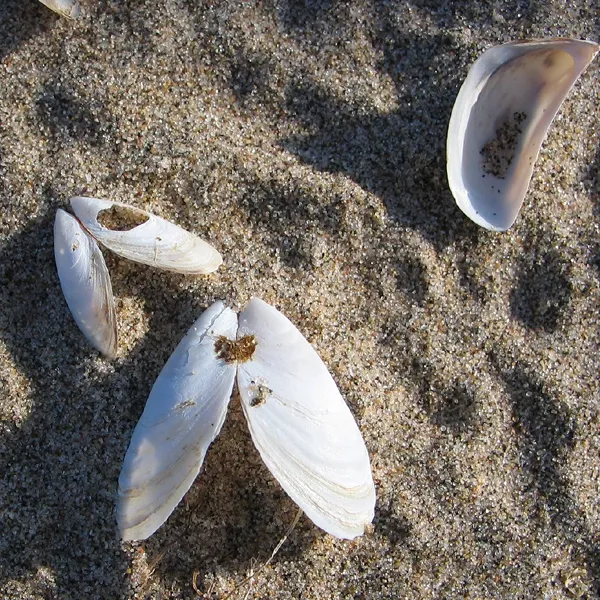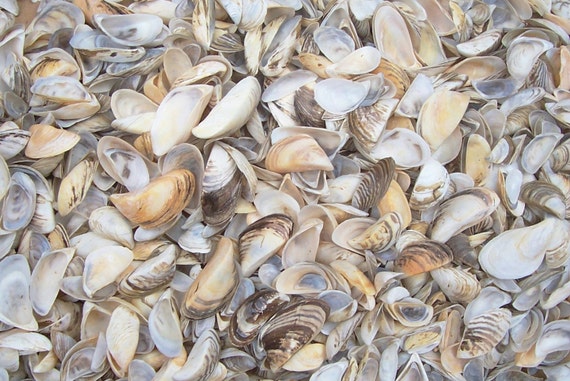
Optimal temperature for larval development is 20–22☌. Spawning may last longer in waters that are warm throughout the year.Īfter the eggs are fertilized, the larvae (veligers) emerge within 3 to 5 days and are free-swimming for up to a month. Over 40,000 eggs can be laid in a reproductive cycle and up to one million in a spawning season. Spawning may start when the water temperature reaches 12☌ and release rate is maximized above 17-18☌ (McMahon 1996). Eggs are expelled by the females and fertilized outside the body by the males this process usually occurs in the spring or summer, depending on water temperature. Females generally reproduce in their second year. In thermally polluted areas, reproduction can occur continually through the year. Under natural thermal regimes, zebra mussel oogenesis occurs in autumn, with eggs developing until release and fertilization in spring. Endemic bivalves are monoecious, dioecious or hermaphroditic, and some are internally fertilized by filtering sperm from the water column. Exotic dreissenids are dioecious, with fertilization occurring in the water column. state centroids or Canadian provinces).Įcology: The life history of zebra mussels differs greatly from most endemic Great Lakes-region bivalves (Pennak 1989, Mackie and Schlosser 1996). * HUCs are not listed for areas where the observation(s) cannot be approximated to a HUC (e.g. † Populations may not be currently present. Lake Champlain Mettawee River Otter Creekīeartrap-Nemadji Door-Kewaunee Duck-Pensaukee Lake Michigan Lake Superior Lake Winnebago Lower Fox Manitowoc-Sheboygan Menominee Milwaukee Oconto Peshtigo Pike-Root St. Lawrence River Richelieu River Seneca Upper GeneseeĪshtabula-Chagrin Auglaize Black-Rocky Blanchard Cedar-Portage Cuyahoga Grand Huron-Vermilion Lake Erie Lower Maumee Sandusky Tiffin Lawrence River Indian Irondequoit-Ninemile Lake Champlain Lake Erie Lake Ontario Lower Genesee Mettawee River Niagara River Oak Orchard-Twelvemile Oneida Oswego Raisin River-St.

Marys Tacoosh-Whitefish Tahquamenon Thunder Bay Tiffin Tittabawassee Upper Grandīuffalo-Eighteenmile Chaumont-Perch Headwaters St. Clair Lake Superior Lone Lake-Ocqueoc Lower Grand Manistee Manistique River Maple Menominee Millecoquins Lake-Brevoort River Muskegon Ontonagon Ottawa-Stony Pere Marquette-White Pigeon-Wiscoggin Pine Raisin Saginaw Shiawassee St. JosephĪu Gres-Rifle Au Sable Betsie-Platte Betsy-Chocolay Black Black-Macatawa Boardman-Charlevoix Brule Carp-Pine Cheboygan Clinton Detroit Escanaba Fishdam-Sturgeon Flint Huron Kalamazoo Kawkawlin-Pine Lake Erie Lake Huron Lake Michigan Lake St. Lake Michigan Little Calumet-Galien Pike-Root The list of references for all nonindigenous occurrences of Dreissena polymorpha are found here.įull list of USGS occurrences State/Province Names and dates are hyperlinked to their relevant specimen records. Great Lakes region nonindigenous occurrences, the earliest and latest observations in each state/province, and the tally and names of HUCs with observations†. A lake in western Massachusetts became infested in July, 2009 (T. A population in Lake Texoma on the border of Texas and Oklahoma was confirmed in June 2009 (B. In January 2008, zebra mussels were discovered in San Justo Reservoir in central California (D.


The Illinois River was the key to their introduction into the Mississippi River drainage which covers over 1.2 million square miles.

In 1991, zebra mussels escaped the Great Lakes basin and found their way into the Illinois and Hudson rivers. By 1990, zebra mussels had been found in all the Great Lakes.įrom the Great Lakes, zebra mussels have spread across the continental U.S. Clair, a water body connecting Lake Huron and Lake Erie. The first account of an established population came from Canadian waters of Lake St. Zebra mussels were first discovered in North America in 1988 in the Great Lakes. Since then, zebra mussels have expanded their range into Denmark, Sweden, Finland, Ireland, Italy, and the rest of western Europe. They first appeared in Great Britain in 1824 where they are now well established. Great Lakes Nonindigenous Occurrences: By the late 18th and early 19th centuries, zebra mussels had spread to most all major drainages of Europe because of widespread construction of canal systems.


 0 kommentar(er)
0 kommentar(er)
